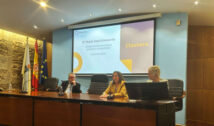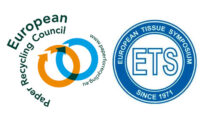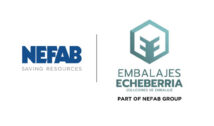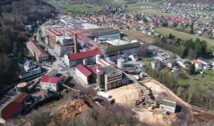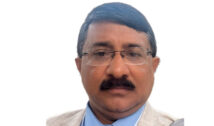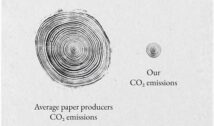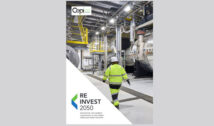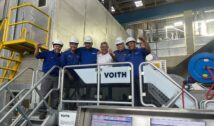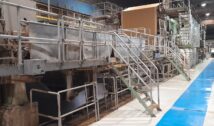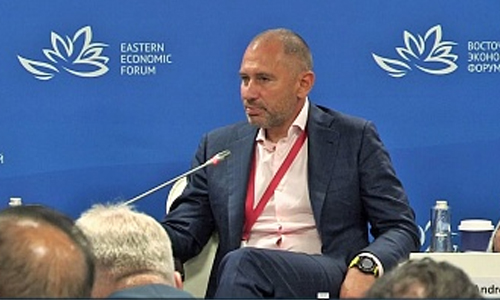
On September 5, 2019 in Vladivostok, during the second day of the Eastern Economic Forum, Mikhail Shamolin, President and Chairman of the Management of Segezha Group of Forest Industry Companies (part of Sistema JSFC), commented on the prospects of development of the pulp and paper industry in the Russian Federation.
At the session entitled “Competition of Countries for Economic Growth: What is Russia’s Plan?” the head of the Company said that considerable economic growth in the pulp-and-paper industry was possible only if the state made it a top priority objective. A target program for development of the pulp industry must be supported by top officials of the executive and the legislative branches, Mr. Shamolin added.
Acccording to Mikhail Shamolin’s assessment, the global pulp market is growing at the rate of 3% a year, and as of today amounts to around $500 billion. Russia, which has the largest stock of coniferous wood than any other country, has one of the lowest pulp production costs in the world. Nevertheless, Russia occupies less than 2 percent of the global market in this segment. The speaker cited Finland as an example. Over the past 40 years our northern neighbors modernized, reformatted and successfully relaunched 50 pulp-and-paper mills, while Russia has not built a single analogous enterprise within the same period.
“Potentially Russia could take up to 20% of the global market of pulp. “There are no fundamental external reasons why this could not be done,” Mikhail Shamolin said. “If you set a goal to start doing something, the government will need to come up with a strategic plan, a target program and a list of actions to overcome the existing barriers, in the pulp-and-paper industry, in sawmilling, and in production of glulam. Since these products are sold at commodity markets, its main advantage is production cost. Russia can guarantee the most competitive price in the world, but to do that we need considerable state support.”
In his speech, the president of Segezha Group gave a detailed description of conditions, which would make it profitable for investors to build new pulp-and-paper enterprises. In particular, in his opinion, to build a plant with the output capacity of one million tons of pulp, 6–8 million cubic meters of annual allowable cut will be needed. Meanwhile, the cost of raw materials delivered to the gates of the mill must be under $25.
“If the state will prepare the economically feasible amount of wood resources, will carry out forest surveying and taxation, and will help with infrastructure, including forest roads, then everything is possible,” the speaker said. According to him, 20% of the world market is worth $100 billion, so with the production cost of $350 per ton Russia could earn good money – in Finland, for example, this indicator stands at $500 per ton. With that, Russia could build from 10 to 30 pulp-and-paper enterprises and take up the fair share of the market.
Speaking of problems with building pulp-and-paper enterprises that require state interference, Mikhail Shamolin named stricter terms of reference, fire safety norms and construction norms and regulations than in Europe.
“Building a PPM in Russia is 1.5 times more expensive than in Finland, and the path to project approval is also quite long,” the head of the forest industry group said. He mentioned the refusal of UPM Company (Finland) to build a pulp production facility in Russia, after which the company opened its enterprise with the output capacity of 2.7 million tons in Uruguay, where the government invested $1.5 billion into construction of a deep-water port and a network of roads to make sure that the new enterprise has all the logistical infrastructure it needs.
Mikhail Shamolin also spoke about the forest fires. “When forests have owners, who are interested in its safety, preservation and profitability, there will be no fires,” the head of Segezha Group said.
During the discussion, the Business Ombudsman under the President of the Russian Federation Boris Titov noted that if previously analysts had spoken about economic stabilization, now they have started talking about growth. In his opinion, it is important that business in Russia would be safe and profitable for investors. The expert community has prepared a roadmap for sustainable growth in the non-mineral sector of Russia, which is currently being adapted to the requirements of tax, tariff, money and credit policy. Another roadmap concerns systemic issues of developing the Russian economy, where the potential is considerably higher than the indicators we have today. In his turn, founder of RUSAL and Free Business Foundation Oleg Deripaska noted that in conditions of economic downturn in a number of countries Russia has new excellent opportunities and that it is just the right time to assess what has been done and what still can be done to provide an impetus for moving forward. He also noted the top priority significance of developing processing capabilities for raw materials.
The session entitled “Competition of Countries for Economic Growth: What is Russia’s Plan?” was attended by Bambang Brodjonegoro, Minister of National Development Planning of Indonesia, Chairman of the Board of Directors of Duc Giang Corporation Hoang Ve Dung, Chief Economist of VEB.RF State Development Corporation Andrey Klepach; Minister of Justice of the Russian Federation Alexander Konovalov, Chairman of the Board of Directors of LLL Rusagro Group of Companies Vadim Moshkovich, other managers of companies and departments.




